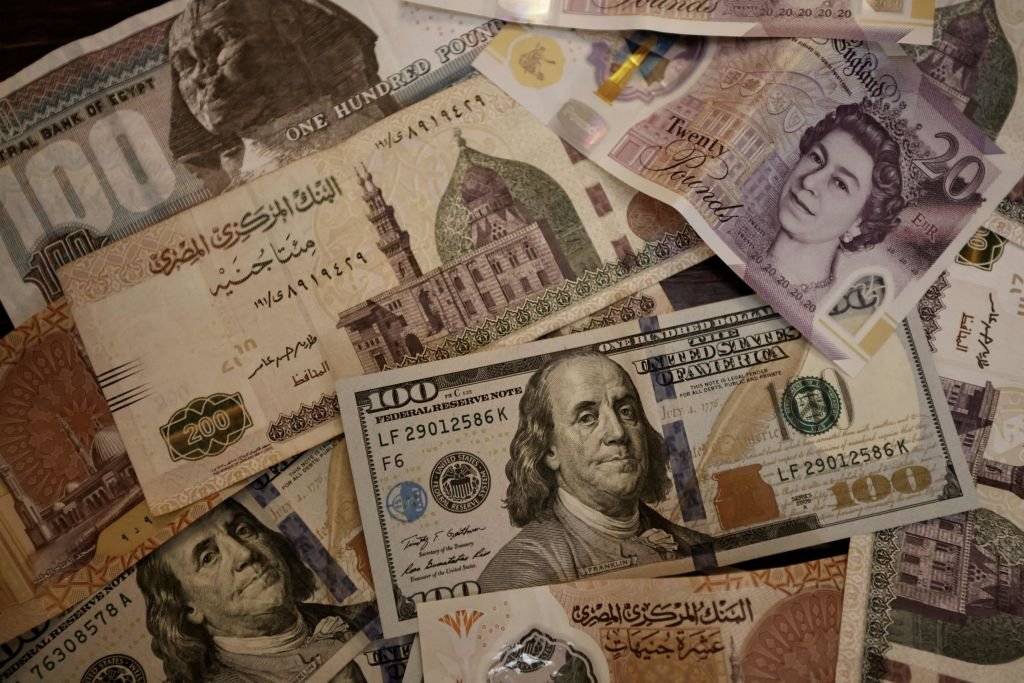Global Debt Soars to Near-Record High of $305 Trillion in First Quarter: Trade Group
Global debt levels soared by $8.3 trillion in the first quarter, climbing to a near-record high of $305 trillion, according to new Institute of International Finance (IIF) data.
The record was set in the first quarter of 2022 at $306.5 trillion.
The Washington, D.C.-based global association of the financial industry published its latest Global Debt Monitor report, reporting that the world continues to take on more debt, from governments to households.
IIF figures found that worldwide government debt surged $2.2 trillion, household debt swelled $1.1 trillion, financial corporate debt jumped $2.1 trillion, and non-financial corporate debt advanced $3.1 trillion. These numbers are up considerably from before the coronavirus pandemic, as the total global debt was $260.3 trillion in the fourth quarter of 2019, representing a more than 17 percent increase.
Researchers warn that debt totals will continue to rise, and that this would have “significant implications for international debt markets, particularly if interest rates remain higher for longer.”
“At close to $305 trillion, global debt is now $45 trillion higher than its pre-pandemic level and is expected to continue increasing rapidly: Despite concerns about a potential credit crunch following the recent turmoil in the banking sectors of the U.S. and Switzerland, government borrowing needs remain elevated,” the IIF said.
But another vital issue has been the dramatic increase in debt service costs, the IIF noted.
“The combination of high debt levels and rising interest rates has pushed up debt service costs, prompting concerns about the use of leverage in the financial system,” the report stated.
Since early last year, the Federal Reserve and other central banks have initiated a quantitative tightening cycle, a blend of rate hikes and balance sheet reductions. As a result, the Fed has raised the benchmark fed funds rate by 500 basis points to a range of 5.00 percent and 5.25 percent, the highest in about 16 years.

A rising-rate climate has become problematic for both the U.S. government and consumers.
According to the Congressional Budget Office (CBO), federal interest payments are projected to total $663 billion in the fiscal year 2023 and then balloon to $745 billion in 2024.
Consumers with credit card debt—the Fed Bank of New York reported that credit card debt surged to $986 billion in the first quarter—are also facing higher servicing payments. WalletHub’s Fed Rate Hike Survey estimated that the institution’s rate hikes in the last year would cost credit card debt holders more than $33 billion over the next 12 months.
Growth of Zombie Firms?
In addition to central banks raising interest rates, banking turmoil in the American and European financial sectors has weighed on credit conditions. Many U.S. reports have suggested that the economy faces a credit crunch, with financial institutions tightening standards and business and consumer loan demand sliding.
A combination of higher interest rates and a contraction in credit conditions “would prompt higher default rates and result in more ‘zombie firms,’” the IIF noted.
Zombie firms are generally businesses that maintain operations and service their obligations but cannot pay off their debts. The term originated in Japan in the 1990s—also known as the Lost Decade—as banks maintained their support of failing companies instead of allowing them to go bankrupt.
The IIF estimates that 14 percent of U.S.-listed firms fall under the zombie category.
“Given the central role of regional banks in credit intermediation in the U.S., worries about their liquidity positions could result in a sharp contraction in lending to some segments, including underbanked households and businesses,” the report stated.
“We estimate that around 14 percent of U.S. companies can be considered zombies, with a substantial portion of these in the health care and information technology sectors.”
In 2021, the Federal Reserve published a study entitled “U.S. Zombie Firms: How Many and How Consequential?” Economists warned that the COVID-19 pandemic was an economic shock that “may severely damage some sectors of the economy, turning many firms into zombies.”
But Goldman Sachs has dismissed fears of a zombie apocalypse in the national economy, noting that the number of zombies has been smaller than many feared.
“There are not nearly as many zombies as some of the headline data might suggest,” wrote Goldman Sachs Research analyst Michael Puempel in a September 2022 report. “The percentage of real ones is far smaller than reports have indicated.”
In addition, the financial system inevitably removes these organizations from the economy, be it a deceleration in economic growth or negative shocks, the bank’s researchers explained.
Credit markets are contending with pressures on many fronts and more “turbulence and weakness in credit over the coming weeks” are expected, say ING strategists.
“All in all we are still constructive on credit markets long term, but we do feel a repricing in the short term is necessary as the dynamics of the market changes. We expect to see more turbulence and weakness in credit over the coming weeks,” wrote ING strategists Timothy Rahill and Jeroen van den Broke, in a research note. “Moreover, we will continue to see days with very heavy supply indigestion. Credit remains much an alpha game, with sector and name selection being of utmost importance.”
‘Crisis of Adaptation’
The acceleration in monetary policy tightening revealed abysmal liquidity positions in various small- and mid-sized banks in the U.S., the IIF noted. The event spread overseas and caused the emergency sale of Credit Suisse.
A “new monetary regime” has also triggered a “crisis of adaptation” for companies and consumers, which the report’s authors say can be viewed in the deposit outflows at regional banks.
Since the collapse of Silicon Valley Bank and Signature Bank in early March, deposits at small domestically chartered commercial banks have tumbled nearly 5 percent to $5.235 trillion, according to the Fed’s H.8 data.
However, there are signs that deposit inflows could be occurring in the banking system as some regional banks are starting to report deposit growth.
Western Alliance Bancorp confirmed in a May 16 Securities and Exchange Commission (SEC) filing that deposits had risen by more than $2 billion since the end of the first quarter. Insured deposit strength also surged to 79 percent, up from 68 percent as of March 31.




